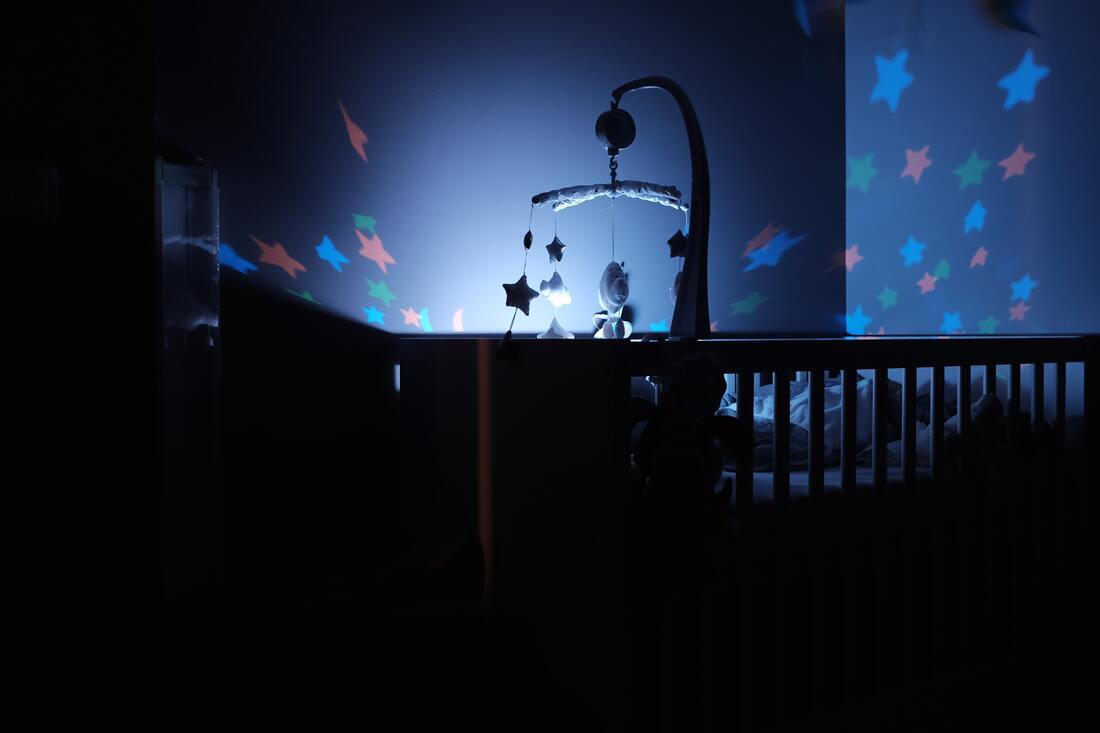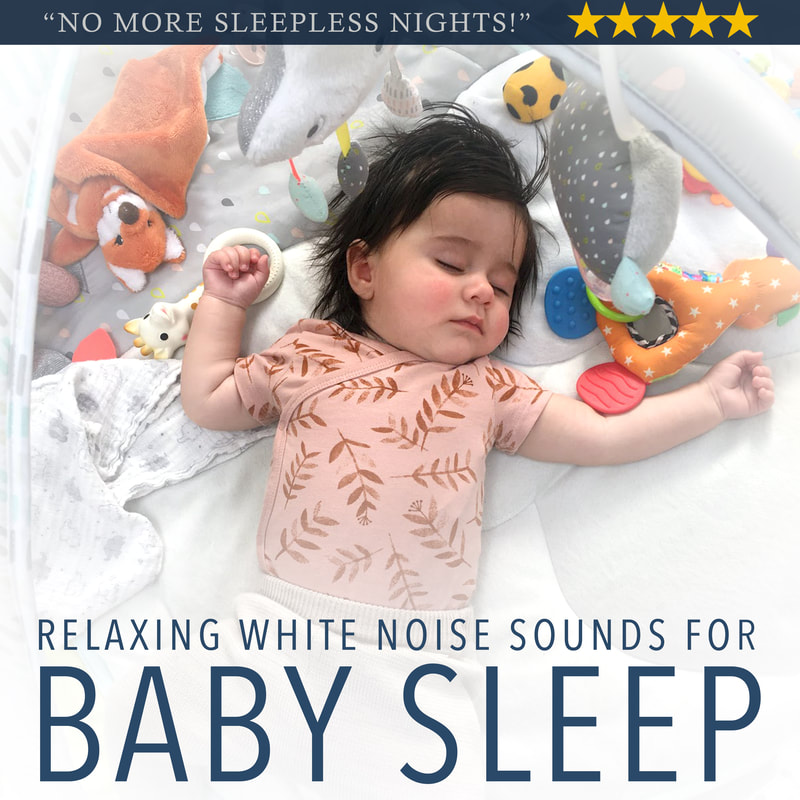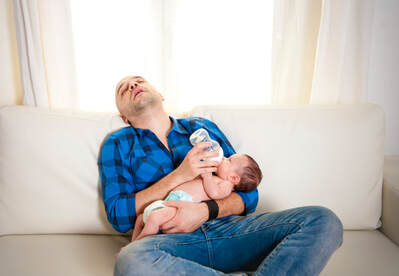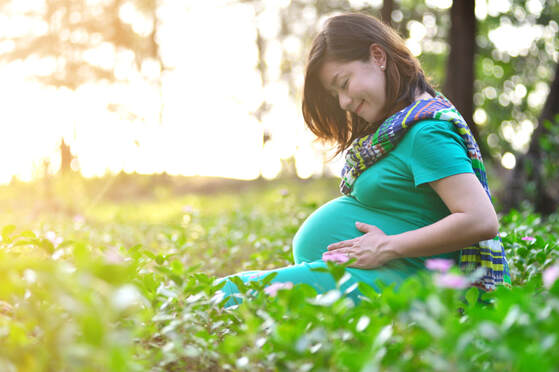|
As parents, the last thing we want is to see our children sad, upset or in pain… in fact, we’ll do anything we can to try to ease their suffering and help them feel safe, happy and loved. But, as we know, sometimes babies need to learn new habits, and it can be a bumpy road until they realize this is just the new, improved way of doing things. That is definitely the case with learning to sleep. For babies who have depended on bottles, breastfeeding and rocking to lull them back to dreamland every time they wake up, it can take a while to learn how to do it themselves.
One of the side effects of sleep training is that babies can temporarily protest the crib or their room. It’s no wonder… they associate these things with something they don’t like: having to go to sleep with less help! This is a pretty common complaint, and many parents experience it when their babies or toddlers start making changes with how they fall asleep. Some even tell me their babies start to cry the minute they walk them into the bedroom! The good news is that it’s usually very short term. In fact, I often encourage parents to see it as a great thing. It means their child is very smart, and has figured out that the bedtime routine now means they are getting close to going to bed. This is not necessarily a happy moment for your child, because she doesn’t know how to do this yet and it’s not what she’s used to. It’s only natural that she’s a little anxious. With time and practice, though, your little one will get better and better at her own skills, and will go to bed happily. In the meantime, just be patient and use soft, soothing tones when you put your baby to sleep. Remind him that it’s just bedtime and that everything will be okay. It often takes a very short time for babies to get over this fear and learn to fall asleep with less and less help. When my own child was old enough to walk, she would often just go up to her crib and point to get in it when she wase ready to sleep. That’s when I knew I was on to something and that the Happy Sleep Plan had really worked; she had become a healthy, secure kid who recognized when she was tired and just wanted to go to sleep. This can be the case for your baby too, so just hang in there and soon enough your child will be going to bed without a fuss! If you need more information about helping your baby sleep, use the Happy Sleeping Baby book which has everything you need to know about sleep! Learn more here. You can also the Parent Resources page for sample schedules and more tips to help your kiddo sleep! Or Contact Us here for more personalized support. We're here to help!
Your baby's room plays an important role in sleep. Now, I don't actually think the picture is a good representation of a good sleeping environment, but it looks nicer than a completely black picture!
Your child's room environment for sleep is a positive sleep prop to help promote sleep. When your baby wakes up at night, these factors help calm the mind and body to help go back to sleep. These tips not only help babies sleep, but also us as adults too! To encourage the best sleep for any age, an ideal room should:
If some of this sounds strange, remember that your baby came from inside the womb where it was dark, the perfect temperature, and had a constant whooshing sound. Re-make your baby's room to be as womb-like as possible and you'll have more success with sleep. This theory even applies to adults! If you have trouble sleeping, try out this room environment too. Visit the Parent Resources page for more tips to help your kiddo sleep! Or get in touch if you have more questions. This post is taken from my book, Happy Sleeping Baby ~ Your Guide for Sleep Success, ! Want to order the book? Use the form below: This post was written by a former client who reached out about creating this white noise album. I use the playlist often when I'm trying to work or relax! Give it a try via the link below in the post. ~Courtney Guest post written by: Kaveh Akaber I’m a filmmaker and composer and have professionally experimented with sound all my adult life and nighttime has always been a creative playground for me. But after our first child, I was struggling to fix my random sleep, take care of my child and try to be creative all at the same time. After years of insomnia, I collapsed. My body said stop. Not even music could calm my senses and make me go to sleep. Doctors advised me to take heavy sleeping pills, but after several weeks I stopped. Before I went to bed, I had a feeling of panic and couldn’t calm myself. This reminded me also of my newborn baby that didn’t have the right tools to calm down before sleep. I have tried various methods to deal with this issue for many years. At one point I was reading an article about different sound therapies. How sound and music could redeem Alzheimer’s patients to start remember again and other sounds that can make you sleep easier. It was during this time I started to look for different methods of white noise sound therapy to deal with my burnt-out state of mind. Sounds are actually ancient life hacks to make you go to sleep. People have used their vacuum cleaner to make noise and get their babies to go to sleep, driving cars for hours, or listening to static on old radios through the whole night. In all of these sounds, you have white noise. Actually, everywhere you go there is noise. Different noise can also be described in various colors depending on which frequency they have. Light waterfalls can be described as pink noise, and heavy waves on sea can be described as brown noise and so on. In my opinion the problem is our surrounding is based on artificial environments with too many sounds that interfere with our senses. We start looking for total silence instead of relaxing or going into deep meditation. But if you think about it, total silence is an even more unnatural state of mind. In our evolution, our minds have developed in light sounds in surroundings. For example, sleeping under the stars, listening to the wind, or sleeping near the sea. White noise can be discovered in all of these natural environments. According to professor Göran Söderlund at Lund´s University, if your body is too tired before sleep you can have a sense of panic stress instead and to fall asleep can take a longer time. Especially babies who don’t have the tool to deal with this issue. White Noise can instead increase the state of alertness and make you more awake and then make you tired quicker and put you to sleep. So, what noise works for you? There are loads of poor recordings and sounds out there, so therefore I started to make my own noises. I created this Relaxing White Noise Sounds for Baby Sleep album inspired by these events and my friend encouraged me to produce one album especially for his baby. I calibrated the white noise with sound recording pulses from other space, the seaside from south Sweden, winds from the mountains in north Scandinavia, and a hairdryer at home. In my studio I almost fell asleep during experimenting with these sounds! So, I thought this might work! This will definitely not solve all your issues with sleeping and a troubled mind, but maybe a good way to make it easier. A strange mind is a strange mind. The only thing you can do is deal with it. /Kaveh Akaber Link to the album Relaxing White Noise Sounds for Baby Sleep: https://open.spotify.com/album/4zdA0jutWM8NmHmOhLFcSE?si=7m3tRtUlT5GSVzNcGIZOvg White noise can be a great part to a perfect bedroom environment. Read more about a great room environment for sleep here. “Happily ever after … becoming parents” – what happens to your marriage after the baby arrives9/1/2020
Guest post by Polya Rosin, Sweden’s #1 Relationship Strategist
To have a child is a miracle, right? I doubt there is a mom out there who could name a bigger source of joy and love than her kids. Most couples dream of the day when they become parents, take birthing classes, read parenting books. And little do they prepare for what is to happen to their relationship, once the baby arrives. Did anyone tell you what to expect in your relationship with your spouse once you become parents? Did anyone give you tools and strategies for how to survive and thrive together, not just as parents, but as lovers, as friends, as a happy couple? How much research, time or money did you invest in your relationship, preparing to become parents? My guess is little to none. And yet the biggest impact on your baby’s wellbeing comes from you and your spouse, and the quality of your marriage. So, let’s look at what happens after the baby (or more babies) comes into your family: 1. Your spouse and your relationship just went from #1 to #10 in the priority list and that is hard to accept – nobody likes to see they no longer matter much 2. Your sleep is messed up – you must have heard that before and yet, the impact lack of sleep has on couples is less spoken of. It does not only make couples irritable and prone to spats and arguments but also decreases work performance, self-confidence and overall health. Not to mention the drive for romance and passion… 3. Your privacy is … well,.. not existent – with babies and small kids around, going to the loo is a family event and taking a shower feels like a speed contest. That looks like a big stress factor, doesn’t it? 4. Personal space and “me time” are more of a dream than a reality – and if you have no time for yourself, how can you talk about time for your man, for intimacy or passion? 5. Peer pressure becomes the cherry on top of the self-doubt cake – most mums and most families feel tremendous peer pressure, start to look at what others do. And “keeping up with the Joneses” or the “Kardashians” really helps the self-esteem, doesn’t it? Yes, joking here but you get the point, don’t you? 6. Social isolation – now that’s a bummer. 7. Exhaustion – “It’s just a growth phase, it will pass!”, if I hear this one more time, I might just check myself into a mental clinic. For most families, parenting is an endless string of tantrums, sleepless nights, chores, infections…. So how can anyone make time for dates, love, passion? 8. Lack of intimacy – well, that should come as no surprise by now, shouldn’t it? Intimacy is about how free you feel to be yourself with your spouse and for your spouse to be free to be himself/herself. But with the lack of sleep, exhaustion, self-doubts, irritability and endless chores, how does one even have the patience to just be with the other person, to listen without judgement? Intimacy is like oxygen. Without it, any relationship suffocates… 9. Low sex drive – there are those lucky few who feel a boost in their sex drive after the baby arrives but let’s face it, most of you hardly find time to go to the loo and have no energy to even shower or shave your legs, so sex drive?! Hm… 10. Romance just went out of the window – well, yeah. After an evening with tantrums, a dozen laundry loads and a night with bad sleep, who feels up for romance? 11. The past rears its ugly head – now that is a big one and certainly an issue that is least spoken of. When you become a parent, you are likely to start to re-live your childhood and see certain childhood issues transfer themselves into your relationship with your spouse. Lack of unconditional love from childhood, abandonment, arguments between parents and “traditional mom-dad roles” suddenly make their way into the new parents life. And.. yes, there is more… Many parents start to reflect on what they lost becoming parents – perhaps career opportunities, perhaps a great body and perfect physical shape, perhaps social life, perhaps intimacy, passion… The focus on what is missing may cloud the way you look at your spouse and makes it hard to speak to each other with empathy and compassion. 12. Mother- Wife-Father-Husband-Friend-Lover-Muse-Professional, perfectionist, high achiever or free spirit? The struggle to combine the different roles is real. 13. And to spice things up – arguments, resentment and blame come in to play. It is hard to take back harsh words, insults, hurt. And let’s face it, raising kids and keeping up a home is hardly ever a 50-50 so at any time point, there is always someone who gives more. And with all the points above, this can lead to resentment and blame. For expats, many of these issues are exacerbated due to lack of support from the grandparents or extended family, lack of close friends, differences in culture, language and societal norms, perceived limitations in opportunities for work, socialising, etc. And research shows most mixed marriages are at a higher risk of separation and divorce. Personally, I believe that mixed marriages have more opportunities, creativity and “out-of-the-box” resources to not only survive and thrive during the young parents stage but also to create lasting satisfaction and fun in marriage. But well, I am an expat, in a mixed relationship with multi-culti kids so you may call me biased So, with all these things in the mix, how do you create your “happily ever after becoming parents”? Here are a few tried and tested tips: 1. Think and act as a team – divide and conquer, and if the other person drops the ball, pick it up without blame. Invest in each other – time, energy, money, love. My personal moto is “whatever works” so throw away all the traditional norms, others’ expectations and “the Joneses and Kardashians” and do what works for you! 2. Keep the flame of romance and passion – and the key to that is intimacy, and the key to that is vulnerability. Tap into compassion and empathy. Be kind to yourself, first and foremost. Ensure you feel well, ensure your needs are met. And only then can you be strong enough to be present, supportive and kind to your spouse. 3. Set boundaries for you as a couple – I know you might feel like sending your biggest cooking pot on its way to my head as you read this but bear with me here and keep an open mind, ok? We live in a society that is very child-centred. There is so much pressure that you put your child first but there is a BIG problem with that notion. If you sacrifice yourself, your partner or your relationship in the process, your child will actually suffer. Safety aside, the best thing for a child is a happy home! And if “mamma ain’t happy, ain’t nobody happy” or as some put it, happy wife – happy life. 4. Praise your partner in public! And apologise in public! – a compliment is 100x more powerful if you say it in public. Lead by example. 5. Always align your parenting strategies – this is another one where you might feel like throwing a pan in my direction but again, “Do it now. Believe it later.” So, listen up! The agreement between parents is more important than what they agree on. Food, sweets, screen time, sleep time, discipline, learning – to your child, it matters more that you agree than what you actually agree on. Research data on what food and routine is best for your child changes all the time, so don’t get stuck on the latest research and set your rules by that. Find out what you and your partner can agree on and then make that the rule. How can you apply these tips to your relationship and create your “happily ever after”? Here is a present for all of the readers of this blog – a bonus 50 min, personal strategy call with Polya Rosin, Sweden’s #1 Relationship Strategist. Normally, this comes at a price of 1500 SEK but for you, readers – it is FREE! This is a one-time, limited offer so take this chance to boost the connection with your partner, to see how you can bring in more intimacy in your marriage and to talk about the strategies to help you become a strong, united parenting team Book your complimentary call strategy session at: https://polyarosin.as.me/schedule.php?appointmentType=8738603 Polya Rosin helps couples create healthy relationships for a happy life. Polya is She is a certified coach and a scientist with over 11 years of experience in health and wellbeing. She is a mum of three kids, an expat since the age of 18, she has a multicultural bonus family and is a strong advocate for passionate life and happy families. Visit the Parent Resources page for more tips to help your kiddo sleep! Or get in touch if you have more questions. If you start seeing that your baby is struggling to take a nap, here are a few things to keep in mind.
First, make sure that you have worked on your baby’s awake window, have set up their room for sleep, and have a good nap time routine in place. If your baby still isn’t sleeping well for their nap, next think if they are going through a developmental stage or regression time. When babies are learning a new skill, it can often interfere with sleep. Also, make sure your baby doesn’t have any sleep props to help fall asleep as these will often result in short naps. If the above aren’t causing short or no naps, here are a few cues that it might be time to drop a nap.
Generally, your baby will drop a nap around these ages: 4 to 5 months – 4 naps to 3 naps 6 to 7 months – 3 naps to 2 naps 13 to 17 months – 2 naps to 1 nap 24 to 36 months – 1 nap to 0 naps If your baby starts showing some of these signs and they are within the age range of dropping a nap, then it’s probably time to adjust nap times! You can find example age schedules at the bottom of this page! Here’s how to drop a nap There are three options that I find work best when dropping a nap time. The first is to let it happen naturally. On some days your baby may take a nap and on other days they may not. This works well for easy-going babies and also easy-going parents. You can read more about temperament here. This option can take a month to adjust to the new nap times. Option two is to keep your baby awake by 15 to 30 minutes longer to help adjust to the change. You will keep them awake with extra play, daylight, or a snack. Limit anything that can trigger sleepiness, such as breast or bottle feeding, car or stroller rides. This option helps your child to adjust to the new nap times, but remember that your baby may be a little cranky when stretching their awake time and this will take anywhere from a week to a month to get on to the new nap times. Crankiness will be normal! Bedtime may be a little earlier to help adjust to the change. Option three is to make the change to the new nap times. Similar to option two, you will keep them awake with extra play, daylight, or a snack. Limit anything that can trigger sleepiness, such as breast or bottle feeding, car or stroller rides. Your child will adjust fairly quickly (quickly can mean anywhere between three days to two weeks to make the change) but may be crankier while making this change. Bedtime may be a little earlier to help adjust to the change. Remember, any change is like a mini jet lag and your baby’s body needs time to adjust, which can take about two weeks. Stay consistent and your baby will adjust before you know! Want more information about helping your baby sleep? Use my sleep book which has everything you need to know about sleep! Learn more here. Visit the Parent Resources page for sample schedules and more tips to help your kiddo sleep! Or get in touch if you have more questions. Just like adults, babies have different temperaments. Some are laid back and happy most of the time; others can be prone to frequent tantrums. Some babies enjoy a peaceful environment; others feel more comfortable when there is noise around. You may not realize, but the type of temperament that your little one has can affect their sleep, as well as having an effect on any sleep training that you provide.
When you are making changes to your child’s sleep, they may respond easily and go with the flow or they may protest for a while about it. This is where knowing your child’s temperament will help you when making changes and what to expect. Do you have a dandelion baby or an orchid baby? Dandelion baby Now first off, if you have a dandelion baby I’m not calling your child a weed! All I mean is that some babies are able to thrive no matter where they are and others need very specific conditions. Just like a dandelion they can adapt and thrive no matter what kind of environment they are in, like this dandelion, for example. It’s not in an ideal place for water, probably gets extremely hot in the bricks and the conditions are not ideal, but it’s growing and thriving without any problem. Before becoming a parent I thought this is how all babies were. Oh, how wrong I was! Orchid Baby Now take and orchid. An orchid needs conditions that are just right. Not too much water, not too much sun light, not too hot, not too cold, juuuuuuust right. If the conditions aren’t good then the orchid doesn’t thrive. I know because I had orchids living in Colorado and never had success with growing them but in Sweden they are like the easiest plant! If you have a child that needs very specific conditions, you know what I’m talking about. You’ll need to be very aware of their awake windows, naps times, routines, and room environment for sleeping. If your baby is an easy going dandelion If you have an easy going baby, the task of getting them to sleep through the night should be fairly simple. In fact, you may find that they do all of the work themselves. This type of baby is often a self-soother. This means that If they do wake up in the night they will usually fall asleep again in a few minutes. If this sounds like your baby, you should simply stick to a regular routine each night, so that they get to know that it’s time to sleep. If you do hear any crying during the night, you should use a technique that is a gradual way to help guide them to sleep but they will be able to start doing it more on their own fairly soon. Your little one may have been startled by waking up and just need a few minutes to settle, so leave them for about ten minutes before you investigate. However, self-soothers and easy going babies do not usually carry on crying. If the upset continues, it’s a good idea to check if there is a problem. If your baby is an orchid Every parent thinks their own child is special; even if their little one is difficult. However, some babies can be hard work; even if their parents will not admit it in public. If this sounds like your baby, the good news is that temperaments can change. Just because your baby is tantrum prone and attention seeking does not mean they will be a difficult toddler or teen. However, babies that are difficult still present a problem in the here and now. They are easily disturbed and upset and they want you to be there when they are. This results in frequent loud crying during the night. One thing you should never do if you have a child with this type of temperament is adopt the ‘cry it out’ technique. Some babies will just keep crying for hours, until they get attention. This is not good for the baby, or anyone else in the household. This does not mean you should let your baby rule your nights either. Here are some tips that you may find useful.
Orchid babies will let you know if they are not happy and they are usually a bit loud about it. Be ready for this when making changes to sleep, or well, anything! The fact is that many babies veer from being easy going to demanding, at a moment’s notice. There can be many reasons for this such as:
The best way to deal with this may be to use a gradual approach to not answering their signals at night. You can start by popping your head into your baby’s room to check on them, and then get them gradually used to you not coming straight away when they cry. If they wake up at night, you first wait only a minute or two. Then the next night you start increasing the time by another one to two minutes until you are up to ten minutes. If they just want to grab your attention, and you do not provide it, they will often get bored and go back to sleep. However, all babies are different, so be prepared to be flexible. Some will be more persistent than others when it comes to this! By the time you are ready to make changes to your baby’s to sleep, you should have a good idea of their personality. Use this knowledge to help you find a sleep training technique that works best for you and your child. Want more information about helping your baby sleep? Use my sleep book which has everything you need to know about sleep! Learn more here. Visit the Parent Resources page for sample schedules and more tips to help your kiddo sleep! Or get in touch if you have more questions. The concept of training a baby to sleep may sound a little strange to you as a parent. Surely, a child should enjoy and benefit from natural sleep, rather than be trained. That’s what I thought in the beginning too! Then I had a baby who needed help understanding when it was time to sleep and what that feeling meant in her body. The thing about training your child is that it can actually help them, and you, to get the right amount of restful sleep. It’s a way of protecting your baby and keeping them healthy and happy. Training or practicing healthy sleep habits is no different than your baby learning how to eat or crawl on their own. Both take time, practice, and patience.
The most important thing to remember is that every child is different, as is every family. What works in one home may not work in another. There are different methods to help your baby sleep so, take a look at the ones mentioned here to create a sleep training routine for your baby that fits your family. What does sleep training involve? Sleep training is simply a way for you to help your child understand how to sleep, so that they get the rest they need. For the first four months of your baby’s life, you really just need to go with the flow. The way your child sleeps will depend on basic needs such as feeding and changing. But what you can do from early on is set up their room for sleep (dark, cool, quiet) and begin simple and consistent sleep routines (feed, song, sleep) to help develop these habits early on. Once your child is around four months old they are usually ready for more routines and sleep guidance but these simple steps will help make this transition. If your child still seems reluctant to sleep for longer periods, do not worry. As I mentioned earlier, every child is different. Your baby may simply need to be a little older before they can begin to understand how to sleep for longer. First steps in sleep training The first thing you need to think about when sleep training a baby is having a routine in place.
The three main baby sleep training methods You will see several sleep training methods mentioned by experts. No one method is best, you simply need to find the method that works in your situation. Let’s take a look at the three main methods, which can be varied to suit. Cry it out This is the method is as it sounds. You place your baby in their crib and you leave the room and return at regular intervals to help soothe. This does not mean that you should just leave your baby crying for hours. If attempting this method, it’s best to place your baby in their crib before they get too tired. Let them cry for a while when you leave and go back to soothe them if necessary. In this method you do not pick your baby up; simply soothe them with your voice. This method can be difficult for some parents to manage. Although this is the method many pediatricians advice parents to use, I believe there are better ways to help a baby develop health sleep habits. This method may not suit all families. Before I knew anything about baby sleep we attempted this method for about 10 minutes and gave up. Now I know that there are better ways to help a child, but if you do use this method, be sure that their room is set up for sleep and they have a consistent routine in place before sleep. No tears This is the complete opposite of the cry it out approach. As soon as your baby cries, you should comfort and soothe them immediately. The problem you may find is that some babies tend to be more attention seeking than others. If your baby knows you will come if they cry, training them to sleep could be a long process. You will need a lot of patience and time with using this method. I find this method to be very difficult because it takes a very long time to see results. Maybe your baby isn’t crying but you are because you are so tired. I also tried this method and it was too exhausting to continue. Fading This method of baby sleep training is popular with a lot of parents and one that has a nice balance of learning and love. It involves moving further away from your child’s crib each night as they fall asleep. They get used to you being at arm’s length and then not being in the room and it’s a gradual process. Fading also involves checking your baby but making it less obvious over time so that eventually they are not even aware of your presence. This is what I base my sleep plans and support on and think that parent assisted changes make for the perfect balance between loving boundaries and loving support from you. You may need to try different methods to find the one that works best for your baby and for you. Do not simply expect that what worked for a previous child will work with the baby you are currently training to sleep. Be prepared to adapt and change routines and methods until you settle on what works the best. My best tip is to decide on a method, make a plan, try it for one week, take notes to see any positive changes (even small ones), and then decide if it’s working for you and your baby. Want more information about helping your baby sleep? Use my sleep book which has everything you need to know about sleep! Learn more here. Visit the Parent Resources page for sample schedules and more tips to help your kiddo sleep! Or get in touch if you have more questions. As you know, I am absolutely passionate about the science behind sleep and helping you and your family finding your way to the sleep you need and deserve. What I’ve found along the way is that it’s not only sleep that weighs in. Nutrition and child development is as important and also goes hand in hand with sleep.
I think most of us have heard or read about the importance of talking to our children to help them with their speech and language development. But did you also know that this will help your kiddo later on in life with things like math, reading and social abilities? So no matter no matter what their age, it is important to talk to children. I always tell parents to tell their kids what they are doing so that they begin to understand but also because it’s great to hear so many words. “Children learn best from speech directed to them by their caregivers creating conversations that build on children’s interests.” And for those of you who are thinking that they can give their child the same benefits by having adult conversations when your child is with them I have to tell you that unfortunately ambient speech will not have the same results. Children thrive when being addressed and engaged in a conversation. This all sounds good but how do you do it without feeling foolish talking to yourself? Here are my top 5 tips on how to talk more with your kiddo to make it feel more natural: 1. Narrate your day. When I was on maternity leave I talked to baby T about what I was doing, what was around us, describing colors and shapes or talking about how things work. It could be things like, “Mama’s going to wipe your little bottom now and change your diaper so you don’t get a rash” or when out grocery shopping “We are going to need an apple, some carrots and broccoli for our salad today. What color apples do you think we should get? Red or green?”. 2. Sing and talk when playing with your kid. Play peek-a-boo and other games where you practice taking turns, talk about what you are playing and what is happening in your games. This also helps them understand how a conversation works. Sing songs where you use your body to describe what is going on, like “Itsy Bitsy Spider” or “Wheels On The Bus”. Describe the colors and sounds of toys you’re playing with, i.e. “The zebra is black with white stripes” or “What sound does the duck make?” 3. Talk about what is going to happen throughout the day. Like “Today we are going to go on a play date with your friend Oliver and in the afternoon we have a check up at BVC (healthcare center for children in Sweden) to weigh and measure you.”I’ve found that as your child grows it is actually quite good to talk to them about what activities you have planned for the day. It gives them a sense of control knowing what’s up next. And even if they don’t remember, you can remind them throughout the day of what the plans were, i.e. “We’ve met your friend and after lunch we’re off to BVC”. It doesn’t eliminate tantrums entirely but it helps your child feel more included in what’s going on and not be ambushed by new things. 4. Encourage others to talk to your child! Grandma’s, grandpa’s, friends who also interact with your kiddo, ask them to engage in conversation with them and let them know of the benefits of doing this. 5. Read to your child. Books stimulate your child’s imagination and you can also pause and ask them questions while reading. For example “What do you think will happen next?” Let me know what tips and advice you have for talking more with your children in the comments below! Resources: Talking with children matters: Defending the 30 million word gap Roberta Michnick Golinkoff, Erika Hoff, Meredith Rowe, Catherine Tamis-LeMonda, and Kathy Hirsh-PasekMonday, May 21, 2018 https://www.brookings.edu/blog/education-plus-development/2018/05/21/defending-the-30-million-word-gap-disadvantaged-children-dont-hear-enough-child-directed-words/ Barns språkutveckling 19 Apr 2018, kl 08:11 http://www.babyhjalp.se/barns-sprakutveckling/ From the time you find out you are pregnant until the day the baby arrives is a time filled with changes and preparations. Here is a (short) list of must-know highlights of what to expect!
The first trimester (Months 1-3) Month 1 (weeks 1-4)
Month 2 (weeks 5-8)
Month 3 (weeks 9-13)
The second trimester (Months 4-6) During the second trimester you’ll most likely have the most energy but, everyone is different. Now you’ll start to look pregnant and really start to feel pregnant too! But you still may be wearing your normal clothes; they are just getting a bit tight! Month 4 (weeks 14-17)
Month 5 (weeks 18-21)
Month 6 (weeks 22-26)
The third trimester (Months 7-9) Month 7 (weeks 27-30)
Month 8 (weeks 31-35)
Month 9 (weeks 36-40+)
What’s next! Now is the time to prepare yourself for the first several weeks with your newborn. A Happy Sleep Plan will give you the knowledge to get you and your baby sleeping and feeling great in no time! A Happy Sleep Plan includes:
Want more information about helping your baby sleep? Use my sleep book which has everything you need to know about sleep! Learn more here. Visit the Parent Resources page for sample schedules and more tips to help your kiddo sleep! Or get in touch if you have more questions. |
- ABOUT
- Books
- Sleep Services
-
Parent resources
- Awake WIndows and Naps
- Newborn Awake WIndow
- Milestones and regressions
- Understanding Baby Sounds
- Baby Sign Language
- Example Schedule - Newborn
- Example Schedule - 3 to 6 months old
- Example Schedule - 6 to 8 months old
- Example Schedule - 9 to 12 months old
- Example Schedule - 13 months+
- Example Schedule - Toddler
- Blog
- Contact










